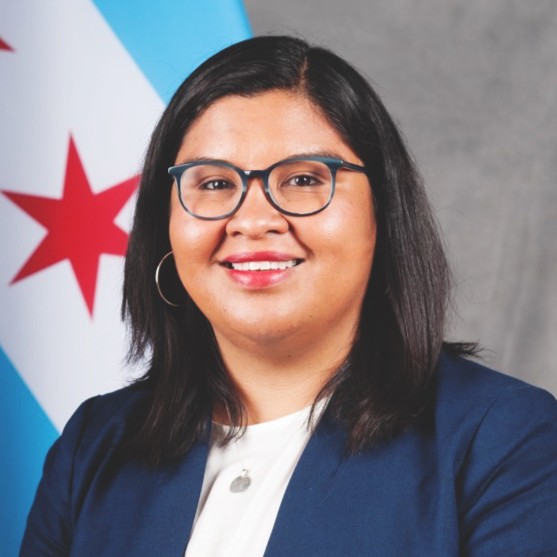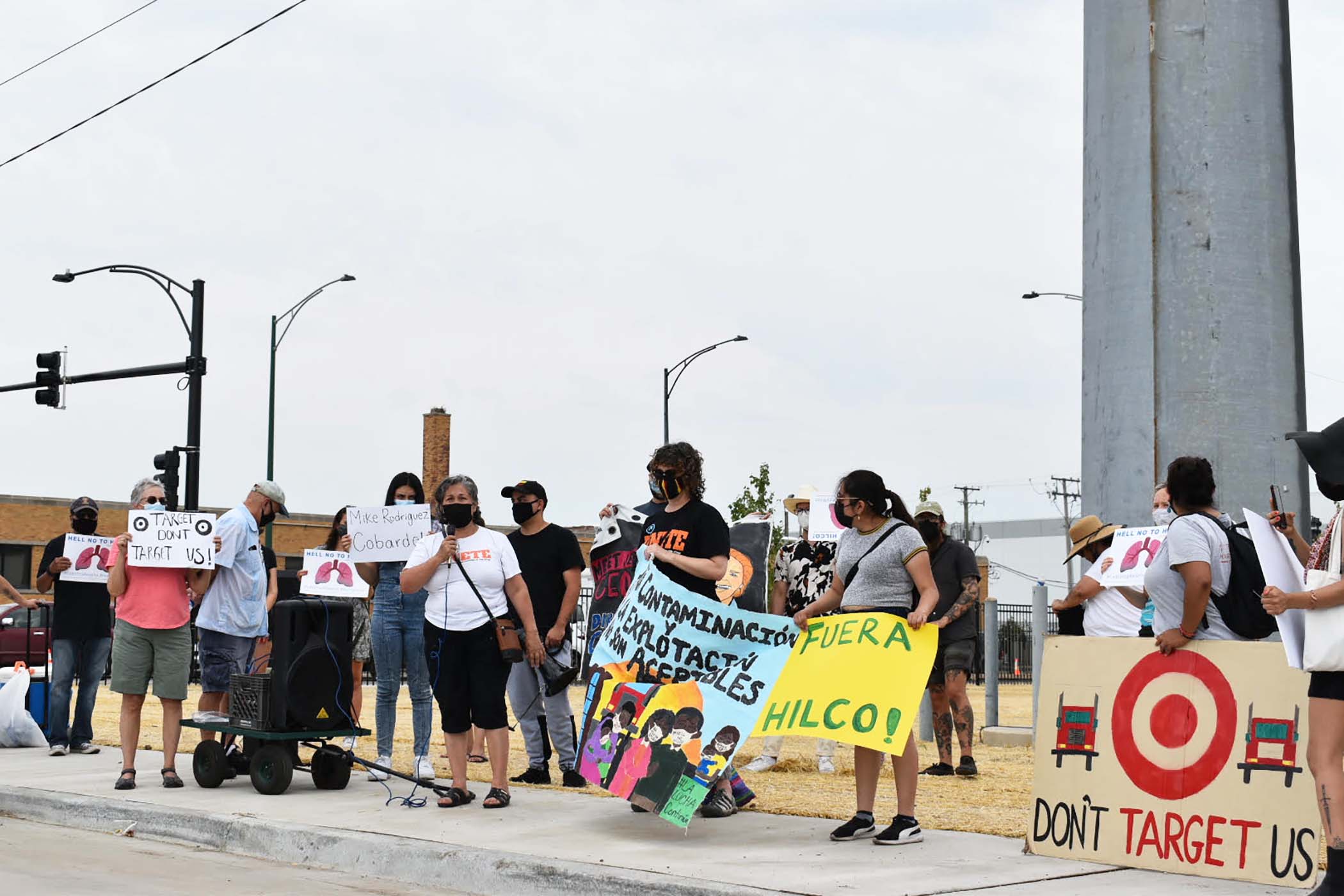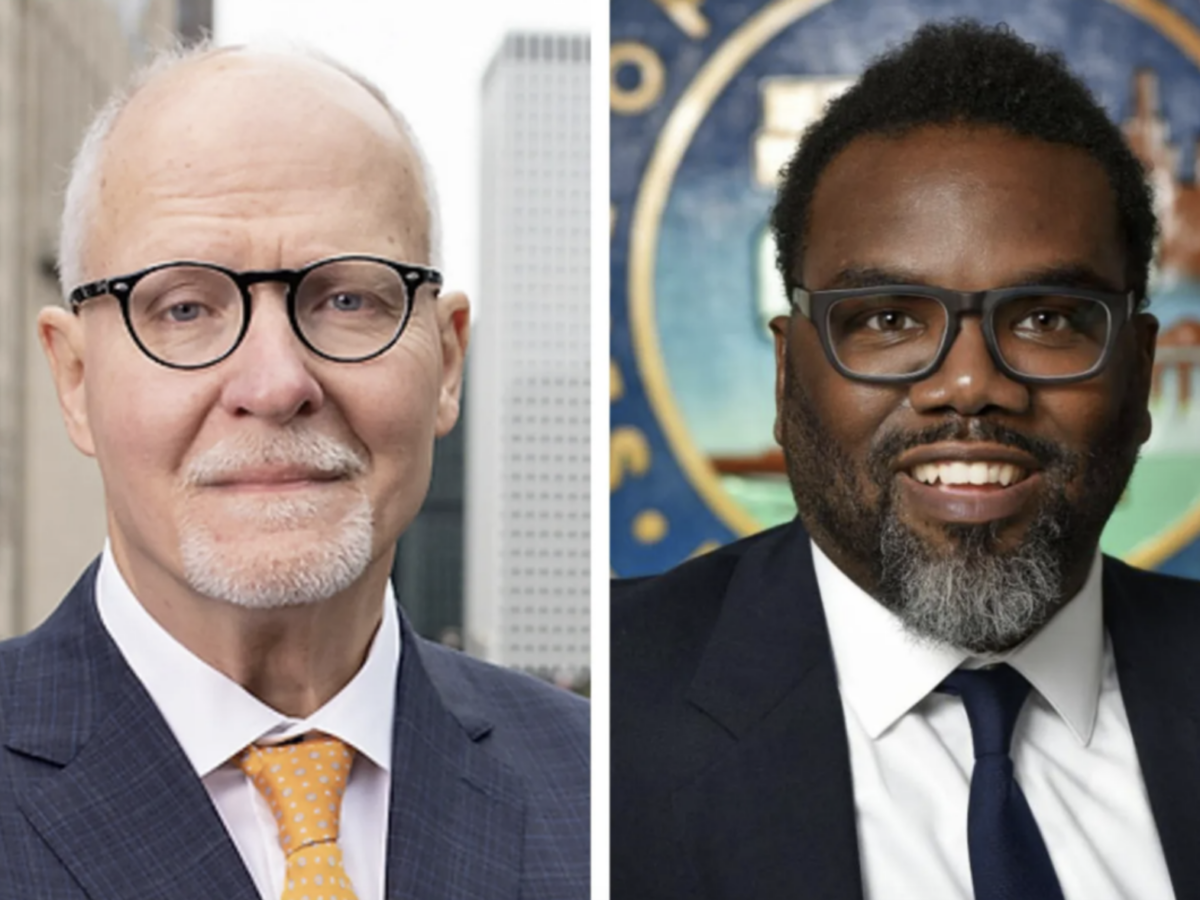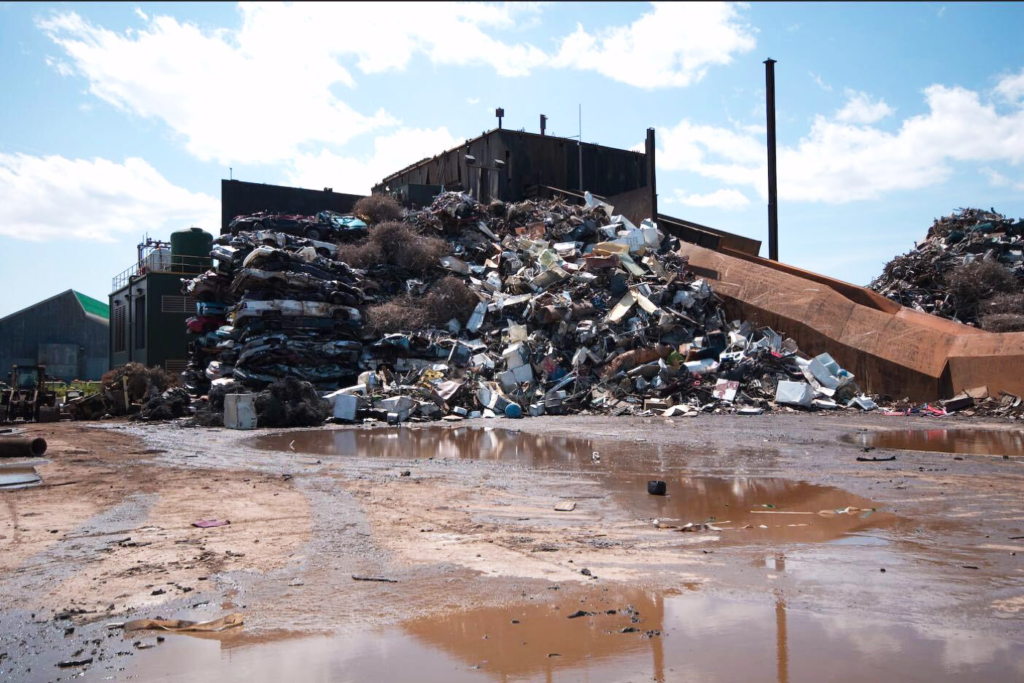This story was originally published by Inside Climate News. Reprinted with permission.
Chicago is at a crucial moment, as city officials and community leaders take the first steps to tackle environmental discrimination after a federal investigation revealed how the city’s zoning and planning practices have disproportionately placed polluting businesses in predominantly Black and Latinx communities in the South and West Side.
At the center of this endeavor is Angela Tovar, who grew up on the Southeast Side. Tovar’s family was part of a wave of immigrants in the first half of the 20th century who moved to the area to work in the steel mills. Residents of the Southeast Side have been overburdened by economic challenges from the steel industry’s decline and the health risks posed by the legacy of toxic waste left behind.
As the city’s chief sustainability officer, Tovar is leading the effort to reform city policies and practices that have disproportionately burdened Black and Latinx residents in this area and other parts of the city.
Appointed by then-Mayor Lori Lightfoot in 2020, Tovar established the Office of Climate and Environmental Equity early this year. She also led the collaboration between the city and environmental justice leaders to study and identify environmental justice communities in the city and draft a cross-departmental citywide plan.
Next, she will be leading the effort to turn the city’s climate office into a new Department of the Environment tasked with managing the implementation of the city’s 2022 Climate Action Plan, which aims for eighty percent greenhouse gas emissions reduction by 2050.
Inside Climate News recently spoke with Tovar about her vision for the Department of the Environment and the next steps in addressing environmental concerns in the country’s third-largest city.
The interview has been edited for length and clarity.
ICN: Did you realize that there was significant pollution in your neighborhood growing up, and how did living on the Southeast Side inform your work now as chief sustainability officer?
Tovar: There are so many memories to look back on. I have very vivid memories of driving through the neighborhood and seeing the smokestacks and big flames from steel production. That’s ingrained in my memory forever. The area of South Chicago where I went to grade school was nicknamed “Slag Valley.” Slag is the byproduct of steel production, and valley meant that they were just open piles of slag. Another vivid memory is of a chunk of the lakefront being closed off to the public because that area was formerly industrial.
All of my siblings had asthma. My brother especially had a very chronic case, was often taking at-home treatments for asthma and infrequently had to seek more critical medical care for it. I was the only one that didn’t have it. At the time, we didn’t make the connection to the health impacts of growing up in an industrial community.
Because of the jobs piece, perhaps people didn’t question it as much. But especially after the economy transitioned, you start to realize how much of an environmental impact that particular industry has had on your community. It is extractive in many ways, and it left nothing behind for the community as an asset as it transitioned out.
Did you know when you decided to pursue urban planning as a career that you eventually wanted to use that knowledge and training to return to the community where you grew up?
I pursued urban planning to become a community organizer. I remember time and time again…big presentations that planners gave in South Chicago about how they would change the neighborhood and bring back jobs. In the late ‘90s, many of those plans didn’t fully connect with communities in the way they hopefully do now. Those meetings and the lack of community engagement resonated with me. What if we utilized city tools to envision solutions for ourselves proactively? I wanted to pursue planning because I wanted to have the same tools, my interest in planning was community-focused.
After graduate school, I worked in the South Bronx, which mirrors South Chicago in terms of a high concentration of industry — a lot of heavy truck traffic and many folks grappling with health disparities. It was community planning that I was interested in, but working in the Bronx cemented my commitment to environmental justice, realizing there was more than just a land-use issue. There were really meaningful ways to think proactively about minimizing environmental impacts through zoning and land-use tools.
How did you approach stepping into this role, which began right at the height of the COVID-19 pandemic?
It was a whirlwind. There was a vacancy in the position for some time, so I think there were folks eager to work with someone to ensure their priorities were addressed, so I just jumped into the deep end. Many people had ideas they wanted to bring to life and wanted to see the city set some robust commitments on climate and environmental justice, things that had fallen off over the course of a couple of years.
Departments were still leading the work. The Chicago Department of Public Health continued efforts at that time to reduce greenhouse gas emissions, but having a leader who could serve in a centralized role and work cross-departmentally to foster the development of a vision in coordination with the mayor was a gap. And so folks were eager to have me lead the 2022 Climate Action Plan and continue coordinating on a shared agenda with stakeholders, advocacy leaders, environmental leaders and civic leaders.

How do you expect the role to evolve or grow with time?
Next year will be about putting the infrastructure in place for a growing Department of Environment. We will add some roles next year and then evaluate what positions should migrate into the Department. My role will be to continue to lead the team and deepen relationships with stakeholders in some of our sister agencies like Chicago Public Schools and Chicago Transit Authority.
Is there an element of mistrust from residents that you’ve had to address, and if so, how are you rebuilding that trust and working with EJ communities?
Yes, it was apparent to me not just as a Southeast-Sider but as someone who has worked in environmental justice. Before city government, I spent ten years on the advocacy side, leading two nonprofit organizations and their environmental justice agenda. My job, especially in the Bronx, was to develop plans for the community based on its vision. It was completely community-led and in practice of the principles of environmental justice. That equity training, which is always a work in progress, the critical nature of that is something that I carried over to this role and in understanding that there is this deep distrust of the systems. I can identify with that.
I’ve been on the other side, in community meetings where I felt like we were just speaking out into this void, and it was unclear if anyone would take our feedback and make an outcome. I’ve sat through meetings where I have worked with community residents who pleaded for a planning project to change course. I understand why folks would be hesitant to anyone coming in to say that they value environmental justice.
Before we started to work on policies, I spent time building rapport, inviting myself to communities, taking tours, getting to know folks and letting them know my background, my values and what I thought was possible. When I felt it was the right time, we started with the Environmental Equity Working Group and then another. I took my time proving that I was committed to working with folks and then demonstrating that commitment. It’s not perfect, and we will always encounter people with reservations about working with us. It’s up to us to continue to prove we’re listening and to get the best possible outcome.
How does it feel to be a part of this group of women of color at the forefront of this environmental justice movement, especially during this critical period of advancing EJ policy in Chicago?
It’s a big responsibility for all of us. Everyone in this work feels that we all are shouldering a big responsibility and wants to deliver the best possible outcome. They understand that this is a once-in-a-lifetime moment to undo systems that may have led to outcomes that are inconsistent with what people see for their community. We have the opportunity to change those systems to provide better outcomes and minimize environmental harm. It took years to get there, but we have convened around shared values, which is an exciting moment.
In terms of what it’s like to be part of this collective of women of color pursuing environmental justice, that’s pretty standard across the country. Environmental justice is primarily led by women of color, and it speaks to the values that are instilled in us as protectors of our communities, our families and our children and their future. It’s wonderful to see the commonalities that you have, even as a government leader.
I can see myself in and have tremendous respect for our frontline leaders. It resonates with me when [they] talk about…the fight to protect their families, their children’s health and their communities. It reminds me that I am them and that this is more than just a government process for me. I am not just another person taking this role because I care about one sustainability issue. This is deeply personal for us.
Aydali Campa covers environmental justice at Inside Climate News. As a bilingual reporter with experience in multimedia, she has covered education, Covid-19 and transborder issues.




